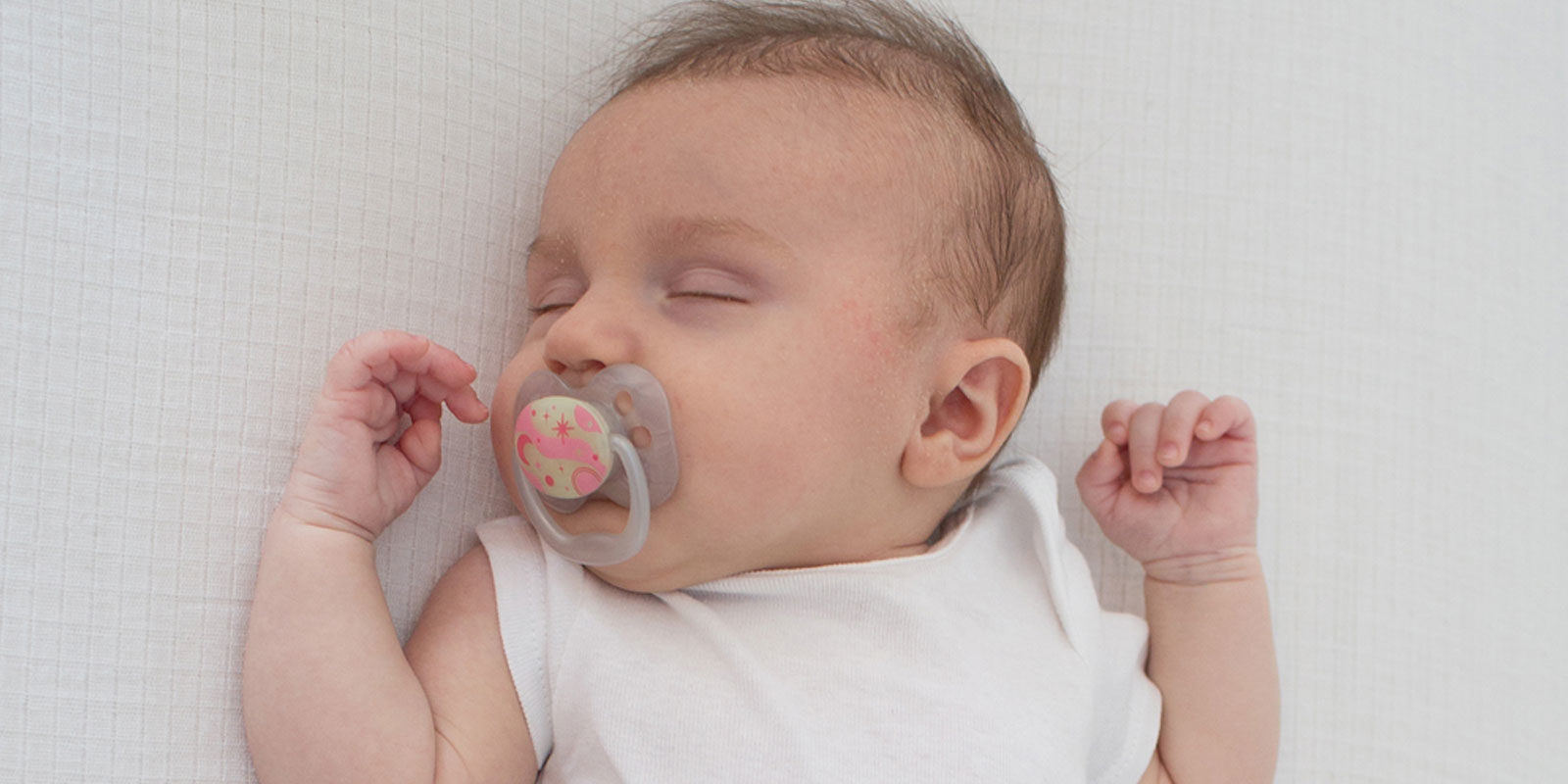So much happens in the first 18 months of baby’s life. From feeding to sleeping, physical growth and mental leaps – your baby is changing on a daily basis. It can be overwhelming to try and keep up, which is exactly why we’ve broken it down to give you an easily accessible resource based on topic. Of course, this isn’t all- encompassing, and we encourage you to use as many sources as possible to learn all about your little one.
In the Baby Guide, we’ll cover Feeding, Sleeping, Physical Development, and Mental/Emotional Development for full-term newborns up to three months of age.
Previously, we’ve covered:
- Feeding in the First 3 Months
- Physical Growth in the First 3 Months
- Mental Development in the First 3 Months
And now, we’re sharing the info on Sleeping in the – yep, you guessed it – first 3 months. Take a look!

While it may look like baby sleeps a lot in the first three months, don’t let that fool you. The longest stretch a newborn baby usually sleeps is about three hours, day or night. Then they’ll wake up for a feeding and a diaper change. Needless to say, this makes for some long nights.
It does get better, though. Eventually. As the average baby reaches three months, they’ll sleep a little less overall and take fewer naps – but they’ll stay asleep for longer stretches, as much as six hours or so. This is a good time to get bedtime rituals in place, a set of repeat acts that help signal sleep time for baby and give them a chance to wind down. And remember, this is just an example of how much baby may sleep. Every baby is different, and yours will sleep the amount that’s perfect for them.
See an Example Bedtime Routine + Sleeping Tips
We all know never to wake a sleeping baby, and that’s because we also all know what happens when they don’t get enough sleep. A tired baby is tough enough, but an overtired baby is an altogether different challenge. Wired and fried, they’re fussy and want nothing to do with your consolations. In this case, it’s best to get them down as soon as possible with as little fanfare as possible.
Learn Overtired Signs and How to Help Baby Sleep
Even though SIDS, or Sudden Infant Death Syndrome, can occur anytime during a baby’s first year, most SIDS deaths occur in babies between 1 and 4 months of age1. Sleep environmental factors can play a role in increasing the risk of SIDS, so safe sleep practices are key. Think position, location, and surroundings. The American Academy of Pediatrics also suggests two important factors that can greatly reduce the risk: One, baby sleeps in the bedroom with their parents in their own sleep environment and two, for baby to use a pacifier.
Discover the Pacifier Designed with Baby’s Acceptance in Mind
Of course, all the information in the Sleeping Guide is based on averages and standards. That does not mean anything is wrong if your little one does not fall into this category. Work together with your pediatrician to ensure baby is sleeping well and often enough, and other tips and tricks to helping them get to sleep.
